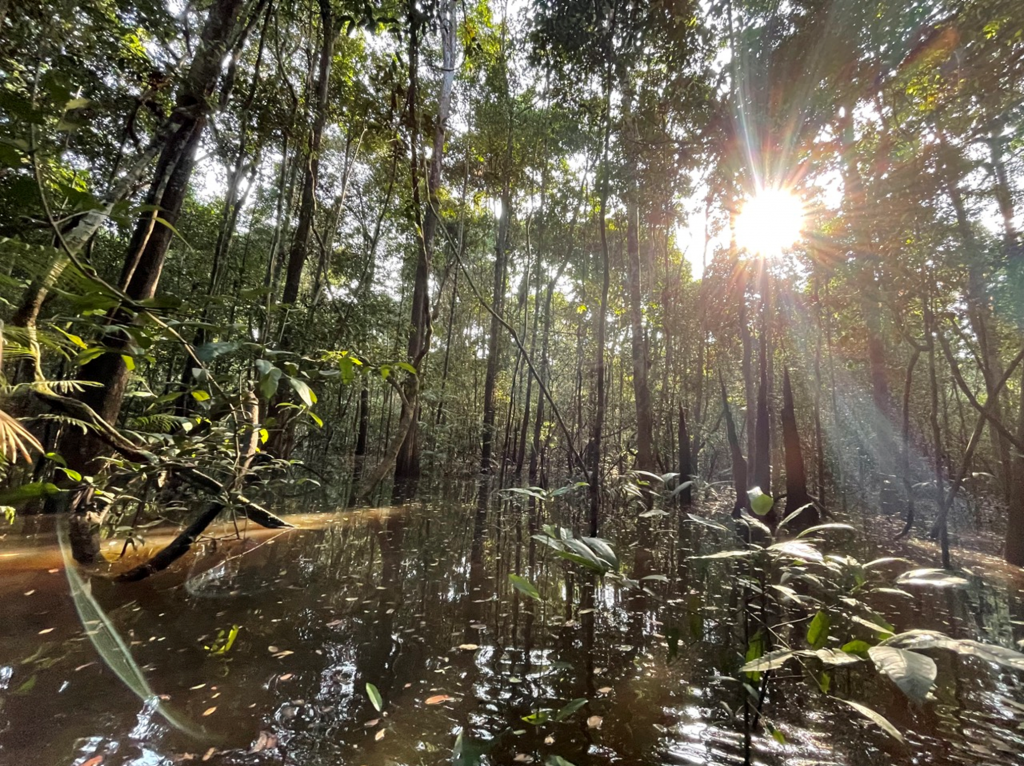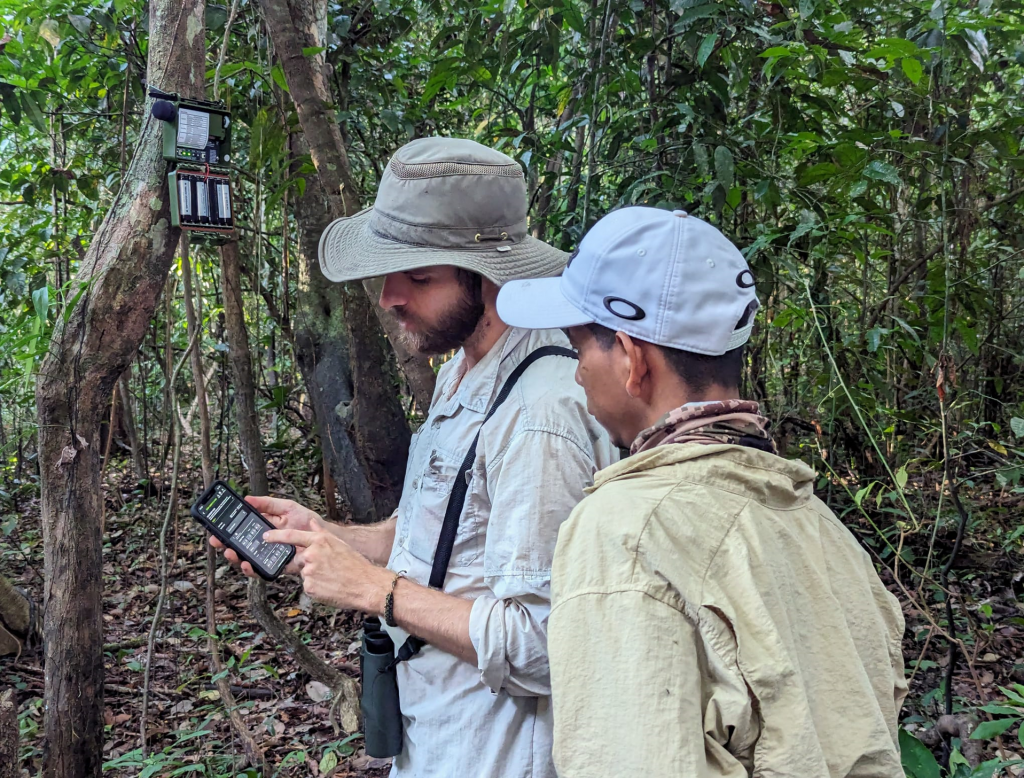Gainesville. Rental car smell. Deserted Miami International Airport at midnight. Uncomfortable sleep with an anonymous action film. Lima airport buzzing at dawn. Coffee. Over-air-conditioned plane. Coffee. Under-air-conditioned Iquitos airport. Non-stop cumbia beats on the bus. Non-stop motor drone on the boat. Heavenly breeze. Afternoon storm clouds. The familiar snaking of that great river. The welcome site of palm-woven rooftops. Cold beer! Sunset macaws. Great Potoo death metal screams. The start of another field season in the Peruvian Amazon.
This was my third full season, and I came armed with 30 passive acoustic recorders, several waterproof notebooks and 300 hours of pre-downloaded podcasts! While I am now accustomed to the journey, I must admit to some apprehension this time around, because I was adding an extra element to my work: a second field site. I only spent 8 weeks at the Amazon Research Center on the Rio Tahuayo, which by now feels like a second home, then the plan was to move to another river and work with guides at Muyuna Lodge. The thought of meeting a whole host of new people, working out a whole new setup and starting a whole new data collection process, had me slightly anxious. Of course, I needn’t have worried; the people of San Juan on El Rio Yanayacu are even more charming, enthusiastic and curious than I could have hoped.
Those first eight weeks seemed to go by in a flash. We already knew the sites well from the previous year, so my guide Jhony and I were quickly able to deploy the acoustic recorders. These little green boxes record high quality audio throughout the day and night, building up hundreds of gigabytes of complex data about their dense forest surroundings. It was the myriad bird sounds which drew me in to the world of passive acoustic monitoring, but the possibilities with this type of data are expanding at an exciting pace, and I aim to take advantage of machine learning techniques to learn not just about which birds are where, when, but about the overall biological rhythms of this forest. This type of forest is particularly special because for about a third of the year it is covered in up to 5 meters of water. This awe-inspiring seasonal inundation has led to impressive adaptations in the plant world, but little is known about how it drives the phenology of birds and other animals.
One of those animals was the reason for the new location, the new thesis chapter. The charismatic and enigmatic Wattled Curassow Crax globulosa has been hunted to near the point of extinction, and is now very patchily distributed across its historically enormous Amazonian range. Curiously for a large, ungainly-looking game bird, it spends much of its time in the rainforest canopy. Even more curiously, it is found primarily in seasonally-flooded areas, the only known member of its family – the Cracidae – to specialize in this habitat. With the guides at Muyuna, led by the enthusiastic and scientifically minded Santiago, we deployed a network of camera traps in addition to 10 passive acoustic recorders. Our aim is to estimate the population size and viability of the curassow in the Yanayacu region, gauge its seasonal movements, and document its behavior across a full annual cycle. Just as importantly though, we are actively working with the local San Juan and Ayacucho communities. Three days before I returned to Florida, we checked the camera traps and were thrilled to find videos of Jaguar, Ocelot, Giant River Otter and of course, Wattled Curassow. The adult male in the picture below came by the camera just 2 days after we set it up, allowing a view into its otherwise secretive nature. I will return next spring when, with the help of machine learning detection algorithms, we’ll review many months of camera trap video and acoustic data. I am already excited to plug those SD cards in!
Nick Gardner is a graduate student pursuing a Ph.D. through the College of Liberal Arts and Sciences, Department of Biology, advised by Dr. Scott Robinson, Katharine Ordway Professor of Ecosystem Conservation and Eminent Scholar here at the Florida Museum.
The 2024 Spring Student Travel Awards are supported by the FLMNH Department of Natural History, including funds from the Louis C. and Jane Gapenski Endowed Fellowship. If you would like to help support this fund for future student awards, please go to:
Louis C. and Jane Gapenski Endowed Fellowship


